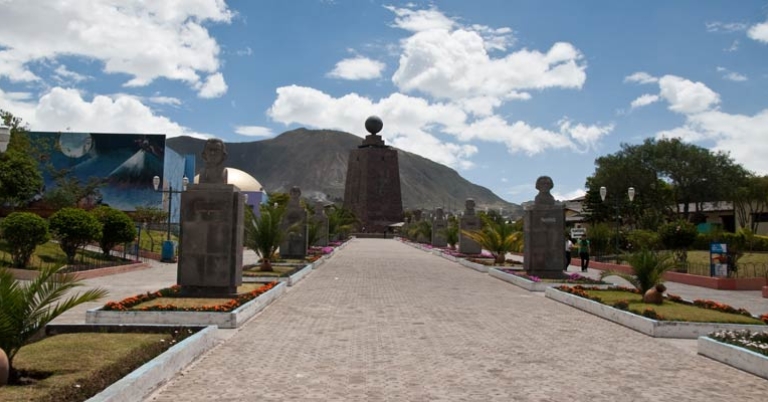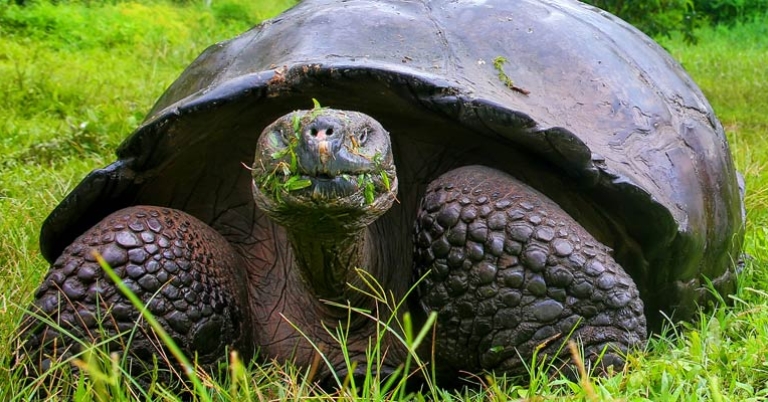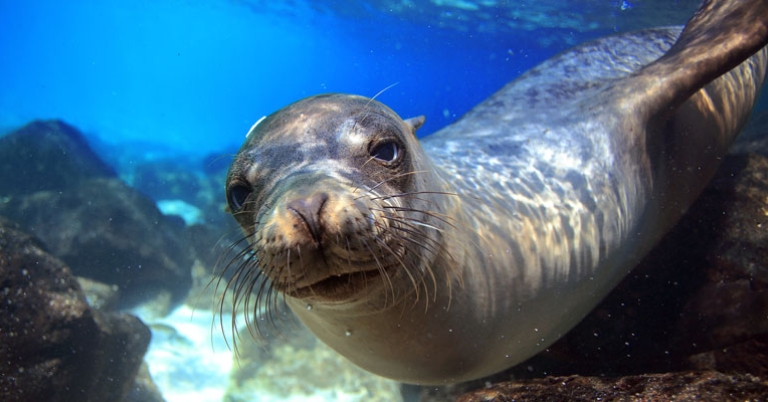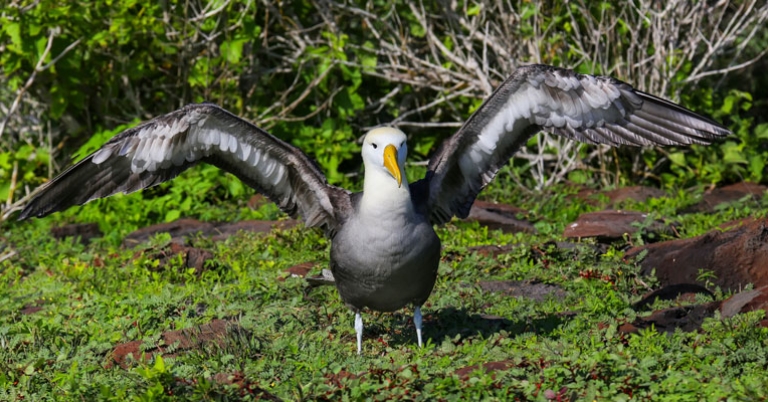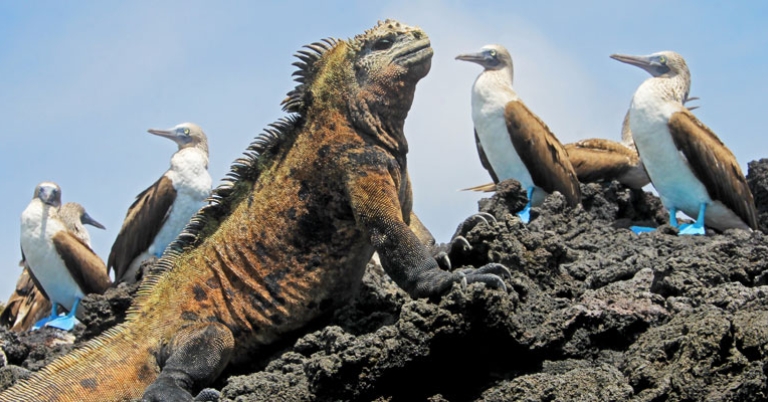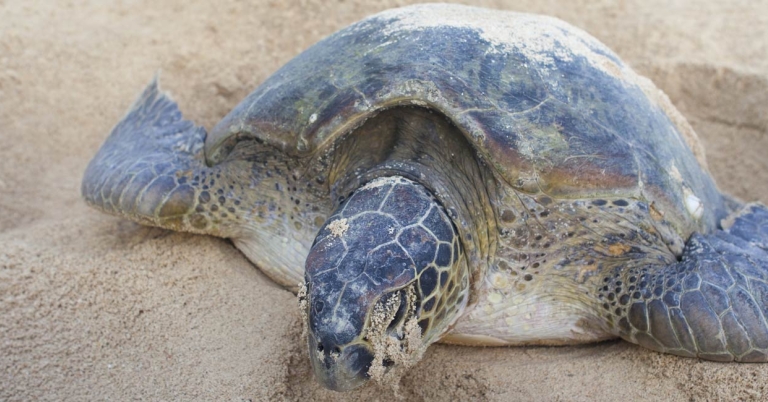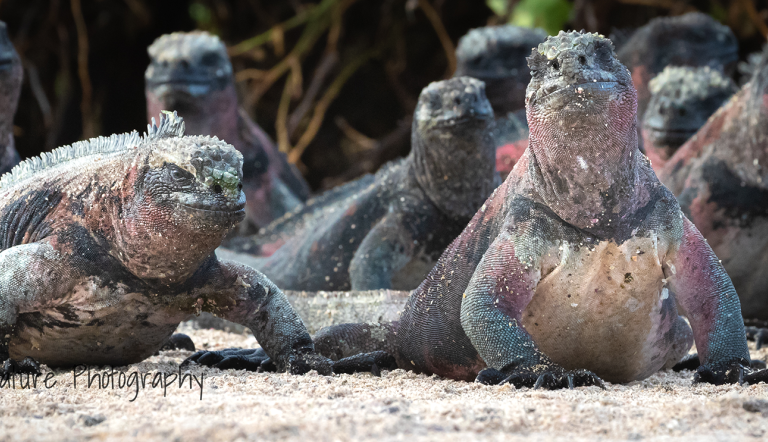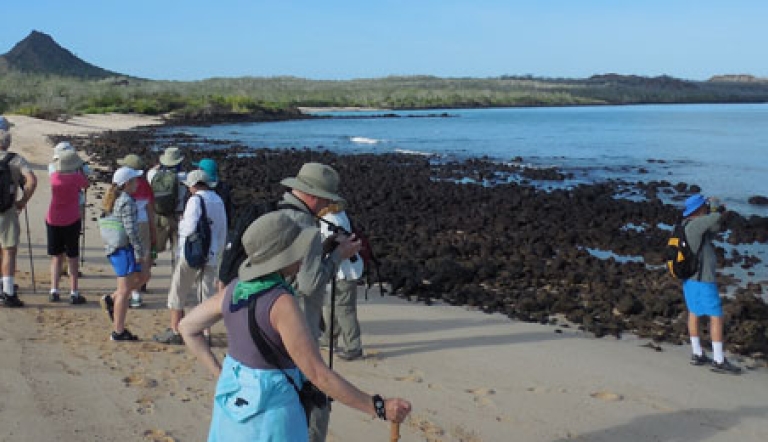Galápagos Islands | Investigating Endemic Wildlife aboard Coral I or II with Mary Washington Alumni on the Road
About this trip
 Named for the tortoises that roam the lush landscapes of this small archipelago, the Galápagos Islands have become world-renowned for endemic and highly specialized wildlife, including Darwin’s finches, giant tortoises, marine iguanas, and more. Join Mary Washington Alumni on the Road to cruise aboard the M/Y Coral I or II and explore the unusual volcanic landscapes that make this archipelago so special. As you make your way from one island to the next, gain an up-close understanding of the island's unique ecosystems and unparalleled biodiversity while experiencing unforgettable wildlife encounters and enriching activities.
Named for the tortoises that roam the lush landscapes of this small archipelago, the Galápagos Islands have become world-renowned for endemic and highly specialized wildlife, including Darwin’s finches, giant tortoises, marine iguanas, and more. Join Mary Washington Alumni on the Road to cruise aboard the M/Y Coral I or II and explore the unusual volcanic landscapes that make this archipelago so special. As you make your way from one island to the next, gain an up-close understanding of the island's unique ecosystems and unparalleled biodiversity while experiencing unforgettable wildlife encounters and enriching activities.
PLEASE NOTE: This itinerary is subject to change without prior notice due to unforeseen circumstances (e.g. weather) or at the discretion of the captain, guide, or the Galápagos National Park.
POST-TRIP EXTENSION: Continue your travel experience with an optional extension to Peru's Sacred Valley and Machu Picchu, June 15 to 21, 2025.
Highlights
- Explore historical Quito, a UNESCO World Heritage Site, and straddle both hemispheres at once at the Middle of the World Monument.
- Explore the islands by boat and small panga craft, making wet and dry landings to hike, swim, and snorkel.
- Encounter the iconic wildlife of the Galápagos, including Blue-footed, Red-footed and Nazca Boobies, Waved Albatrosses, Galápagos snakes, green sea turtles, and sea lions.
- Marvel at striking landscapes and hardy vegetation endemic to the Galápagos and its volcanic terrain, like red Sesuvium and Scalesia forests.
- See giant tortoises up close and learn about the important conservation and education efforts taking place at the Charles Darwin Research Center.
$7,445
Per person
About this price
Land cost only. Does not include round-trip airfare to and from destination.
What makes us different
Rich content
Carbon offsetting
Wildlife up-close
Service anytime
Expert guides
Flight arrangements
Daily Itinerary
Print ItineraryQuito
Quito
Galapagos Islands
Galapagos Islands
Galapagos Islands
Galapagos Islands
Galapagos Islands
Galapagos Islands
Galapagos Islands
Quito
Departure
Pricing
Print Pricing$7,445
Per person
About this price
Land cost only. Does not include round-trip airfare to and from destination.
What's Included
- Activities and meals as mentioned in itinerary
- Full time guide per region for the duration of your program
- All tips
- Galapagos National Park fees
- INGALA card
- Internal flights relevant to itinerary
- Non alcoholic beverage with meals
- Carbon Offset
What's Not Included
- International flights
- Items of personal nature
- Travel Insurance
Pricing Details
Full payment of $7445.00 is due to hold space on this trip. This payment is not refundable; 100% cancellation fee.
Holbrook Travel strongly recommends the purchase of travel protection for medical emergencies while traveling and to protect your investment. Please note the purchase of Cancel for Any Reason Coverage or to exclude pre-existing conditions with Trip Cancellation coverage may require policy purchase within 10-14 days of your initial deposit, depending upon the provider.
Final payment due date: March 03, 2025
Travel Info
Print Travel InfoEntry & Exit Requirements
U.S. citizens must have a valid passport to enter Ecuador. Passports must be valid for at least six months after the date of departure.
For visits fewer than 90 days, visas will be issued upon arrival in Ecuador. Tourists may be required to provide evidence of return or onwards travel.
If you are not traveling with a U.S. passport, please check with the Embassy of Ecuador for the requirements based on your nationality.
Health Information
IMMUNIZATIONS
The Centers for Disease Control recommends that all travelers be up to date on routine vaccinations such as measles-mumps-rubella (MMR) vaccine, diphtheria-pertussis-tetanus vaccine, varicella (chicken pox) vaccine, and your yearly flu shot before every trip.
There are no vaccinations required for entry into Ecuador (unless you are traveling from Brazil, Democratic Republic of the Congo, or Uganda, in which case proof of yellow fever vaccine is required).
Though not required for entry, the CDC recommends inoculation against hepatitis A, hepatitis B, and typhoid for most unvaccinated travelers to Ecuador.
Please consult your physician for additional information and recommendations based on your individual circumstances.
MALARIA
Malaria is not known to be present in Guayaquil or Quito or in the Galápagos Islands. If you are concerned about malaria prevention, please consult your physician.
Other Insect-borne Illnesses
Other insect-borne illnesses are known to occur on mainland Ecuador, including dengue fever, leishmaniasis, Zika virus, and others. The CDC recommends that travelers to Ecuador protect themselves against insect bites: Cover exposed skin with lightweight, long-sleeved shirts and pants and use an insect repellent containing an active ingredient like DEET or picaridin. Apply sunscreen first, followed by the repellent (preferably 20 minutes later).
As a precaution, the CDC advises women who are pregnant to consider postponing travel to any area where Zika virus transmission is ongoing.
SEA SICKNESS
If you’re prone to feeling queasy, we suggest you consult your physician for advice on the best ways to prevent motion sickness. We recommend that you avoid showering when the boat is in motion and remain cautious of activities while passing through rocky waters.
ALTITUDE SICKNESS
Upon arrival at locations of high elevation, shortness of breath and a pounding heart are normal responses to the lack of oxygen in the air. However, for some visitors, these symptoms can deteriorate into altitude sickness. Headache, extreme tiredness, dizziness, nausea, and loss of appetite are standard symptoms. Staying hydrated and well rested is important to adjust to the altitude. Avoiding heavy, fatty foods and alcohol in the days before arriving to altitude can help. Over-the-counter medications are also available to help prevent or alleviate symptoms. It’s advisable to avoid sleep medications, as they can slow breathing and respiration, which aid in getting the blood oxygenated while sleeping. Participants who take blood pressure medications should discuss this with their doctor as the medication can drop pressure too low at times.
SUN EXPOSURE
The effects of the sun can be damaging to the eyes and skin. Spending time outdoors exposes you to the sun’s harmful ultraviolet (UV) rays, even on cloudy days. To protect yourself from the sun, use a broad spectrum sunscreen of at least SPF 15, protect skin with clothing, wear a wide-brimmed hat and sunglasses, and drink plenty of fluids.
PHYSICAL FITNESS REQUIREMENTS
Visitors to the Galápagos Islands should be in good health and capable of walking over rocky, uneven, and potentially slippery terrain. Regardless of your physical stamina, bringing a walking stick will help maintain your balance.
Respiratory Illness Protocols
Please review our Respiratory Illness Protocols page, which explains our policy and procedures if you or another traveler should develop symptoms of a respiratory illness during your trip. Your participation in a Holbrook Travel program indicates that you are in agreement with these protocols.
Resources
Print ResourcesVessels
Video: Galápagos Fitness Information
Video: Snorkeling in the Galapagos
Suggested Packing List
Everyone has personal preferences when it comes to packing; for this reason, the information below is offered as a general guide and not a definitive list. You know yourself best: Use your discretion and pack what you think will serve you, based on your personal preferences and specific itinerary.
You may find many of these items in our Gear Store.
CLOTHING
Casual, comfortable clothing is suitable for most activities. You may wish to bring a slightly nicer outfit or two (eg sundress, polo shirt) if your itinerary includes dinners out or more formal activities.
Bring enough clothing suitable for the length of your program. Pack clothing that can be worn in layers to adapt to weather changes throughout the day.
- A combination of short-sleeved and lightweight, long-sleeved shirts for sun and mosquito protection
- Shorts
- Lightweight, quick-drying long pants for sun and mosquito protection
- Undergarments
- Sleepwear
- Lightweight jacket or sweater/sweatshirt
- 1-2 bathing suit(s)
- Socks
- Shoes – Consider your specific itinerary when choosing footwear. For most programs, you’ll likely want at least one pair of comfortable, closed-toe walking or hiking shoes suitable for forest hikes and walking over cobblestones or other uneven terrain. Sturdier hiking boots may be appropriate for more active itineraries. In addition, many participants opt for a pair of sturdy sport-strap sandals (e.g. Keens, Tevas, or similar) and/or casual flip-flops or sandals. In the Galápagos, a pair of aqua socks, reef walkers, or water shoes is recommended.
- Lightweight rain jacket, hooded poncho, and/or windbreaker
- Visor or wide-brimmed sun hat
- Bandana, scarf, or neck gaiter
- Wetsuit (shorty wetsuits are available to rent, but you may prefer your own)
Personal toiletries
Pack toiletries based on your personal preferences and habits. Below are just a few recommendations to keep in mind.
- Shampoo, conditioner, lotion, deodorant/antiperspirant, etc. – Note: In the Galápagos, biodegradable shampoo and soap are provided onboard the boat; if you wish to bring your own, please make sure they are biodegradable to comply with conservation policies. If possible, avoid strong fragrances if you are sensitive to insect bites.
- Soap and washcloth or a small, quick-drying microfiber towel – Washcloths are not standard in all hotels. If you normally use a washcloth, you may wish to bring one from home.
- Hairbrush, comb, hair ties, shower cap.
- Toothbrush and toothpaste
- Razor
- Ear plugs, especially if you are a light sleeper
- Personal hygiene products
- Insect repellent with DEET or picaridin
- Biodegradable, reef-safe sunscreen and lip balm with SPF
- Aloe vera gel
- A travel pack of tissues – also useful as napkins or toilet paper if needed
In addition to your personal toiletries, it is useful to pack a small medical kit, which you can easily prepare. Helpful items might include: bandages, antihistamine, a pain reliever, motion sickness and/or altitude sickness medication (if you are prone to either), anti-diarrhea medicine, individually wrapped pre-moistened towelettes and/or hand sanitizer, antibiotic ointment, anti-fungal cream, moleskin for blisters, eye drops, tweezers, a mini sewing kit, and an extra pair of disposable contact lenses or eyeglasses if you wear them.
MISCELLANEOUS
Remember to pack valuables such as your passport, cash/credit cards, and medications in your carry-on luggage.
- Passport and photocopies of all travel documentation
- Personal insurance card and travel insurance information
- Money – ATM/credit card, traveler's checks, and/or cash; small bills in good condition are recommended
- Prescription medicines (if applicable), with a copy of the prescription
- Yellow fever certificate (if required; only if arriving from a country where yellow fever transmission is a risk)
- Sunglasses with strap
- Small day pack for hikes and excursions
- Flashlight and/or head lamp
- Travel alarm clock or inexpensive waterproof wristwatch with alarm – Not all hotels provide alarm clocks.
- Binoculars with lens cleaner
- Camera and related equipment, such as charger, lenses, and extra memory cards
- Reusable water bottle
- Non-perishable snacks
- Pocket knife or multipurpose tool - Pack in your checked luggage
- Zip-top style bags – useful for packing toiletries, sorting clothing, storing damp or muddy shoes, or as a dry bag for protecting electronics
- Notepad or travel journal and pen
- Music or reading material for down time, long bus drives, or on the airplane, and a portable bright light to read by
- Walking stick with rubber tip (folding or collapsible, for walking on rough and uneven terrain)
- Swim mask/fins (snorkeling equipment is available to rent and often included for most groups)
- A small quantity of laundry detergent if you’ll be washing clothing by hand
- Money belt
- Converter and adapter for electronics
- Chargers for electronics
NOTE: There is a weight limit of 50 lbs. of checked luggage and one carry-on per person for your flight to the Galápagos Islands. Your luggage and/or carry-on may be subject to inspection by the Ecuadorian government in an effort to prevent the introduction of foreign plants and animals to the Galápagos Islands.

Questions
For more information, contact Kevin Van Dien at kevin@holbrooktravel.com or 800-451-7111 x312
